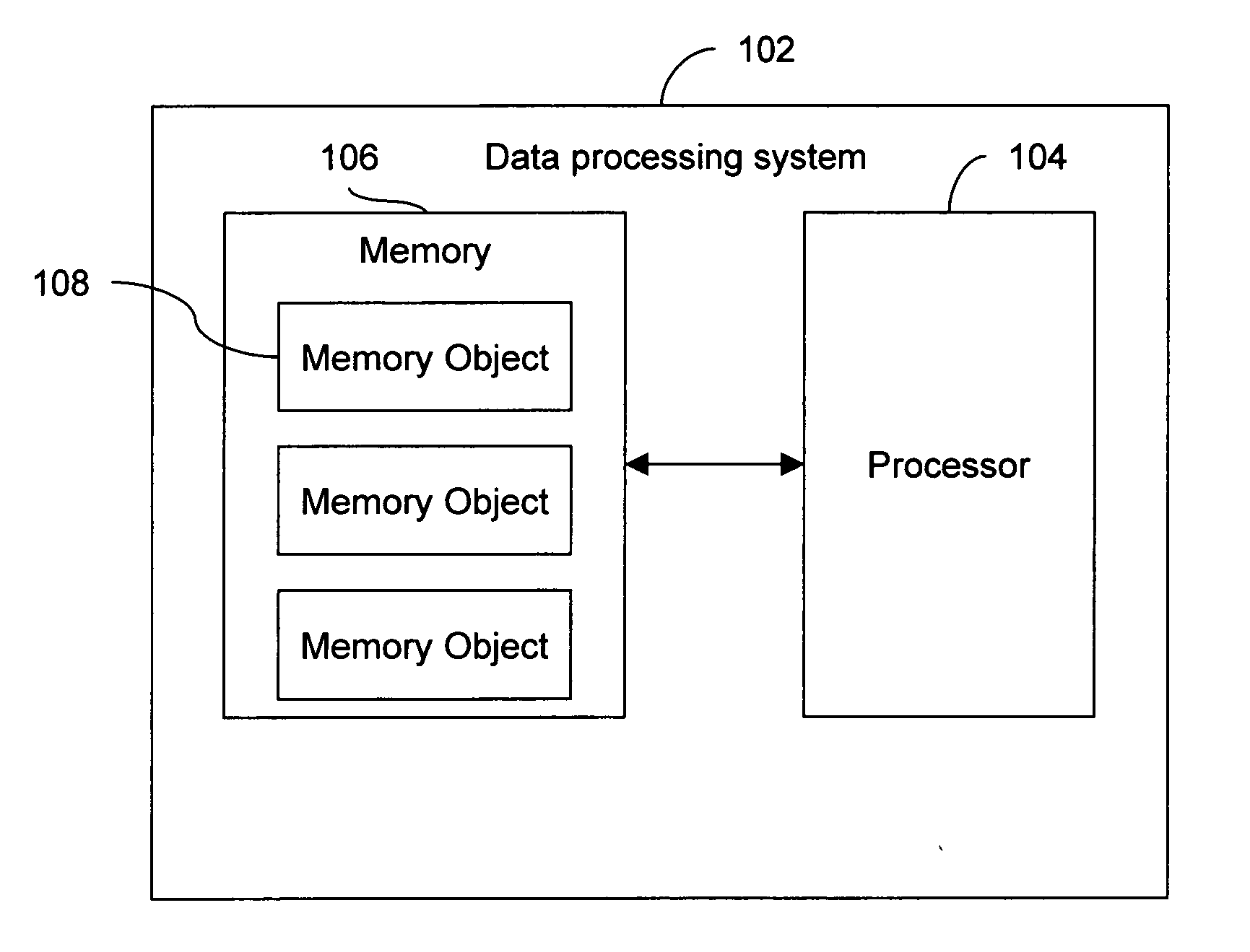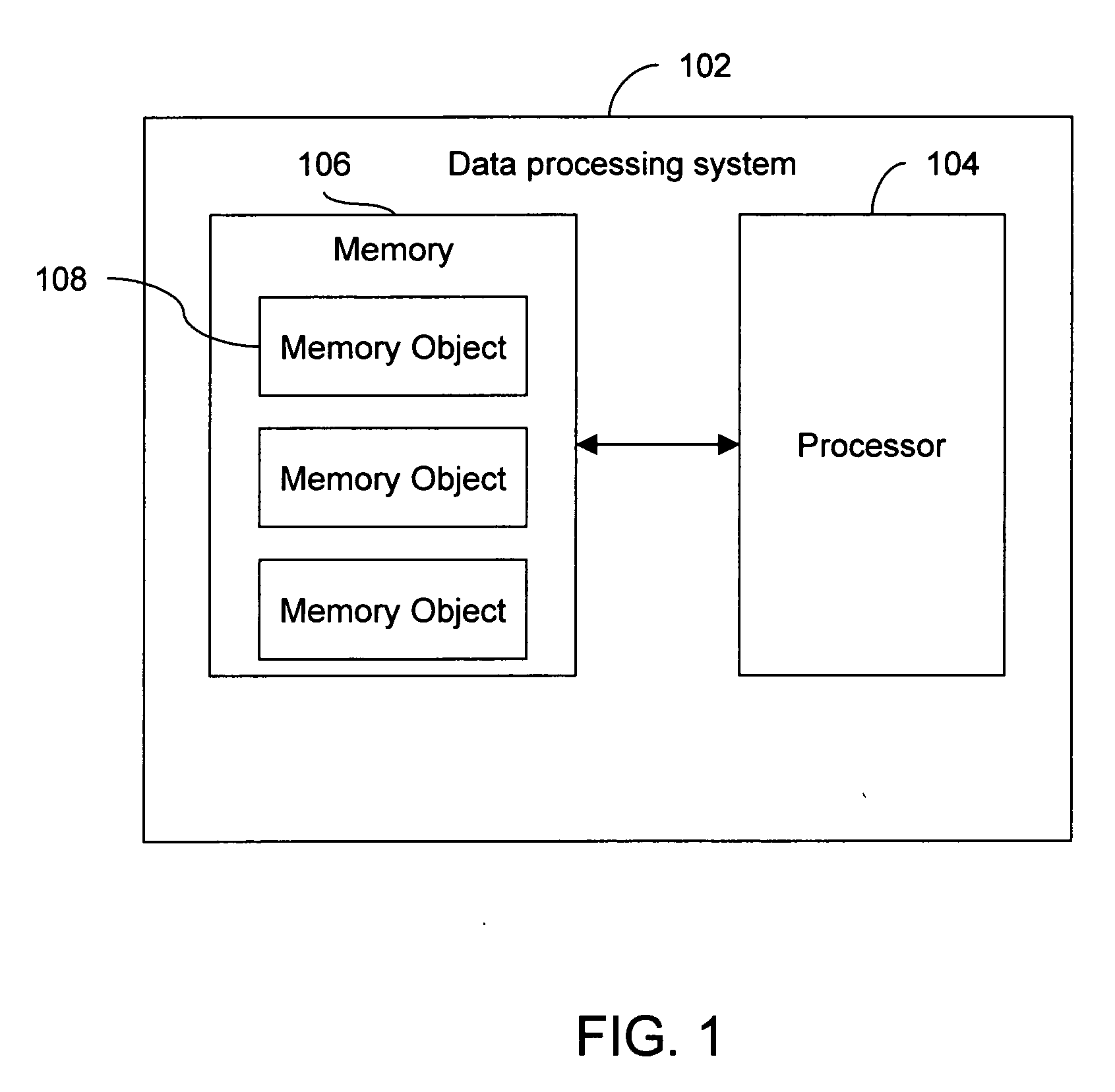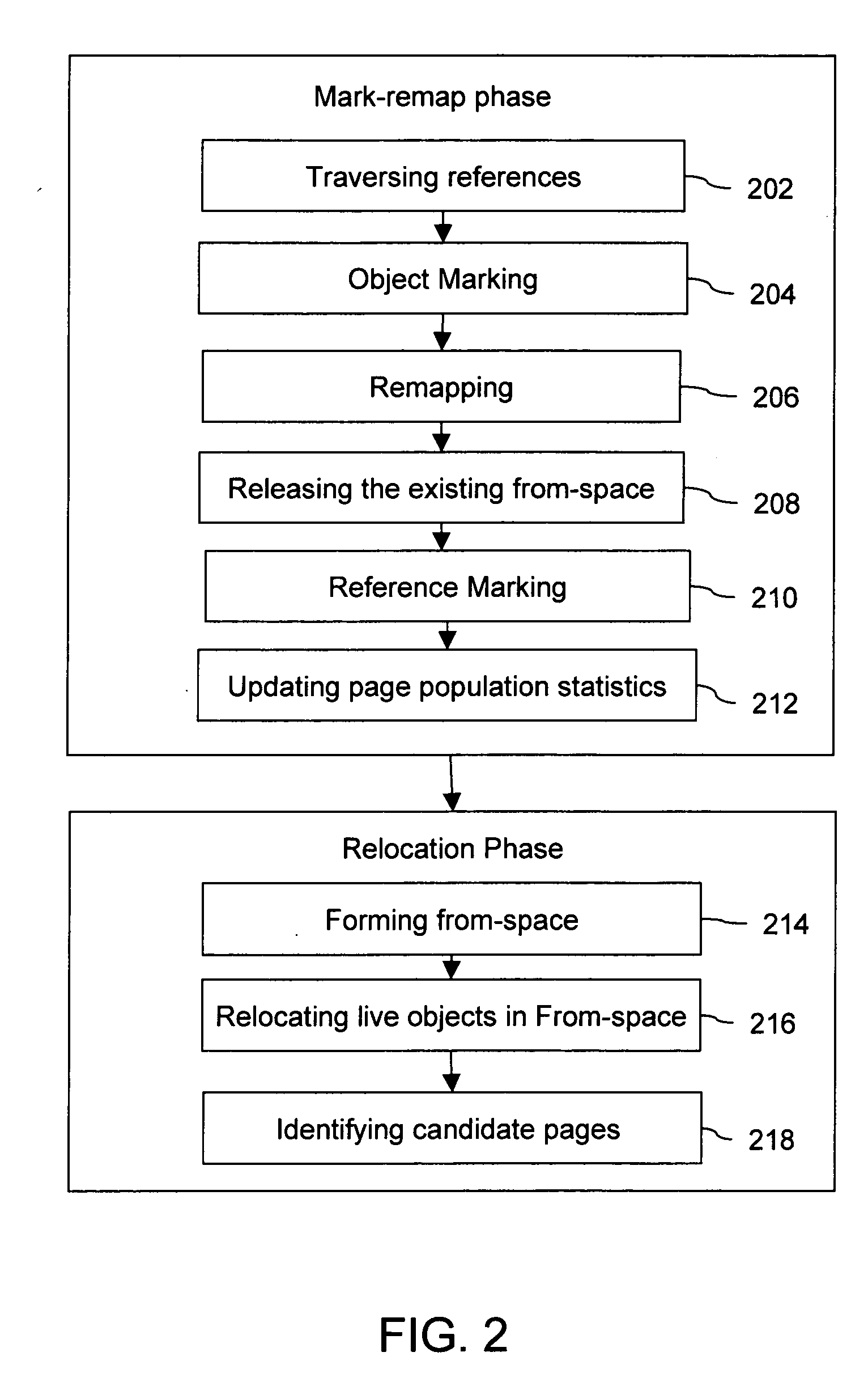System and method for concurrent compacting self pacing garbage collection using loaded value and access barriers
a garbage collection and load value technology, applied in the field of memory management, can solve the problems of increasing the time-consuming of program execution, affecting the efficiency of manual memory management, and over-run of memory
- Summary
- Abstract
- Description
- Claims
- Application Information
AI Technical Summary
Problems solved by technology
Method used
Image
Examples
example
[0098] In both the Mark-remap and Relocation phases, the mark bits on memory objects and references play an important role. The values of LIVE, DEAD, MARKED THROUGH and NOT MARKED THROUGH undergo changes as the disclosed method proceeds through a number of iterations. The operation of the disclosed method, with respect to the state of various marks during a few iterations of the disclosed method, is explained hereinafter in conjunction with an exemplary situation.
[0099] The exemplary situation looks at five objects named A, B, C, D, and E existing in the memory allocated to a program. Some objects contain references to other objects. The root references point to objects A and B. FIG. 8 shows a state table of the various marks at various stages of the disclosed method. Object A contains reference x and y to objects B and C respectively. A.mark denotes the mark bit on A. A.x.refmark denotes the reference mark bit on reference on A to B. A.y.refmark denotes the reference mark bit on r...
system embodiment
[0105] The disclosed method is implemented as a system that operates on a data processing system such as a personal computer. The data processing system has a processor and memory. The programs written or accessed by a user are stored in the memory of the data processing system and are executed by the processor. During execution of a program, the processor allocates memory objects in the memory for various functions and data involved in the program. The user-written program is executed by another program called a mutator. A program called a collector executes the program code for the disclosed method. In a preferred embodiment, both mutator and collector exist in the memory of the data processing system. In an embodiment of the disclosed invention, the collector can be independently executed on a separate data processing system having a memory and processing capabilities. For instance, an Application Specific Integrated Circuit (ASIC) can be designed specifically to perform the func...
PUM
 Login to View More
Login to View More Abstract
Description
Claims
Application Information
 Login to View More
Login to View More - R&D
- Intellectual Property
- Life Sciences
- Materials
- Tech Scout
- Unparalleled Data Quality
- Higher Quality Content
- 60% Fewer Hallucinations
Browse by: Latest US Patents, China's latest patents, Technical Efficacy Thesaurus, Application Domain, Technology Topic, Popular Technical Reports.
© 2025 PatSnap. All rights reserved.Legal|Privacy policy|Modern Slavery Act Transparency Statement|Sitemap|About US| Contact US: help@patsnap.com



